
Retro OST: Lata 90. Przełomowa era w brzmieniu gier wideo
Zbiory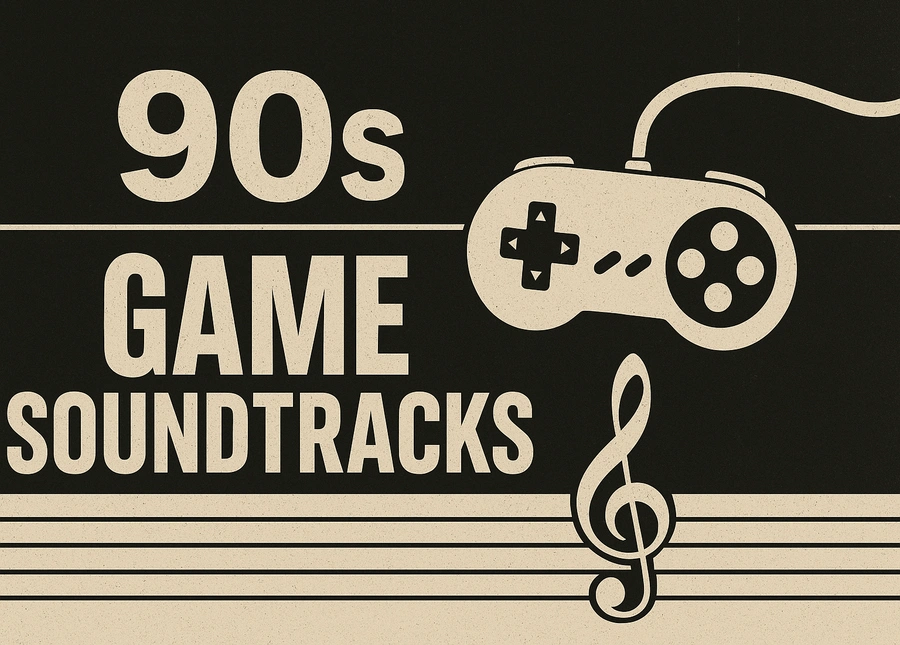
W naszym poprzednim materiale zagłębiliśmy się w złotą erę ścieżek dźwiękowych gier wideo lat 80., gdzie chiptune'y czyniły cuda, a ikoniczne melodie na zawsze zapadły w pamięć graczom. Ale jeśli lata 80. położyły fundamenty, to lata 90. stały się prawdziwym punktem zwrotnym, zmieniając muzykę w grach nie do poznania.
Lata dziewięćdziesiąte zapoczątkowały nadejście nowych technologii, takich jak CD-ROM i znacznie ulepszone karty dźwiękowe. Otworzyło to przed kompozytorami bezprecedensowe możliwości: teraz mogli wykorzystywać pełnoprawne orkiestrowe aranżacje, złożone elektroniczne bity, riffy gitarowe, a nawet nagrane partie wokalne.
Właśnie w tej dekadzie narodziły się legendarne ścieżki dźwiękowe, które nie tylko idealnie uzupełniały rozgrywkę, ale także stały się samodzielnymi dziełami sztuki. Ukształtowały one unikalne brzmienie gier wideo dla całego pokolenia, określając standardy i inspirując niezliczoną liczbę kompozytorów. Przygotuj się, aby ponownie przeżyć te niezapomniane melodie i dowiedzieć się, dlaczego lata 90. słusznie uważa się za przełomową erę dla muzyki growej.
Final Fantasy VI (1994)
Ścieżka dźwiękowa do Final Fantasy VI, stworzona przez Nobuo Uematsu, często jest nazywana szczytem jego wczesnej twórczości i jedną z najlepszych ścieżek dźwiękowych w historii gier wideo. Posiada niewiarygodną głębię emocjonalną i różnorodność, odzwierciedlając bogatą fabułę, liczne postacie i ich osobiste dramaty. Od epickich kompozycji orkiestrowych, takich jak "Dancing Mad", po delikatne i melancholijne tematy, jak na przykład "Terra's Theme", muzyka idealnie oddaje patos, tragedię i nadzieję tej wielkiej przygody.
Uematsu mistrzowsko wykorzystuje możliwości sprzętowe SNES-a, aby stworzyć bogate i wielowarstwowe brzmienie, które do dziś porusza wyobraźnię. Każda kompozycja nie tylko służy jako tło, ale aktywnie uczestniczy w tworzeniu nastroju i ujawnianiu charakteru postaci. Ta ścieżka dźwiękowa to dzieło sztuki, które głęboko porusza słuchacza i pozostaje w pamięci na długo.
Final Fantasy VII (1997)
Ścieżka dźwiękowa do Final Fantasy VII, stworzona przez legendarnego Nobuo Uematsu, to prawdziwa muzyczna podróż, która głęboko zapadła w serca milionów graczy. Od majestatycznych i epickich tematów, takich jak "One-Winged Angel", po rozdzierająco piękną "Aerith's Theme", muzyka idealnie oddaje dramatyzm, skalę i emocjonalną głębię tej kultowej gry RPG. Każda kompozycja nie tylko towarzyszy wydarzeniom, ale staje się integralną częścią narracji, wzmacniając każdą bitwę, każdy moment triumfu i każdą tragedię.
Ta ścieżka dźwiękowa jest niezwykle różnorodna: waha się od energetycznych utworów bojowych po nastrojowe melodie miast i emocjonalne motywy przewodnie postaci. Uematsu mistrzowsko wykorzystuje dźwięki orkiestrowe i syntezatorowe, tworząc unikalne brzmienie, które jest natychmiast rozpoznawalne. To właśnie dzięki tej muzyce przygody Clouda i jego przyjaciół zyskały tak potężne brzmienie, czyniąc ścieżkę dźwiękową jedną z najbardziej lubianych i wpływowych w historii gier wideo.
The Legend of Zelda: Ocarina of Time (1998)
Muzyka z The Legend of Zelda: Ocarina of Time, napisana przez Koji Kondo, jest uważana za jedno z największych osiągnięć w historii ścieżek dźwiękowych gier. Zanurza ona gracza w magiczny świat Hyrule, wypełniając go poczuciem przygody, tajemnicy i nostalgii. Od ikonicznych melodii, które Link sam gra na okarynie, takich jak "Song of Storms" czy "Zelda's Lullaby", po majestatyczny "Hyrule Field Main Theme", każda kompozycja idealnie pasuje do ogromnego otwartego świata i jego zmieniających się epok.
Kondo wirtuozersko wykorzystuje melodie nie tylko jako tło, ale także jako interaktywny element rozgrywki, czyniąc muzykę integralną częścią rozwiązywania zagadek i postępu w grze. Ścieżka dźwiękowa oddaje emocjonalne niuanse każdej chwili – od spokojnych wiejskich krajobrazów po intensywne bitwy z bossami i tajemnicze lochy. To dzieło muzyczne, które do dziś wywołuje silne emocje i pozostaje wzorcem dla wielu kompozytorów.
DOOM (1993)
Ścieżka dźwiękowa do oryginalnego DOOM to kwintesencja adrenaliny i metalowego chaosu, idealnie oddająca istotę tej kultowej gry. Stworzona przez Roberta Prince'a, ta ścieżka dźwiękowa jest dosłownie przesiąknięta agresją i bezwzględnością, idealnie pasując do brutalnej akcji i stale narastającego tempa eksterminacji demonów. Ciężkie riffy gitarowe, szybkie perkusje i złowrogie melodie syntezatorowe tworzą poczucie ciągłego zagrożenia i wściekłości, zamieniając każde starcie z piekielnymi pomiotami w prawdziwy koncert rockowy.
Ta ścieżka dźwiękowa to nie tylko muzyka w tle; sama w sobie jest częścią rozgrywki, popychając gracza naprzód i wzmacniając poczucie zniszczenia. Melodie, często inspirowane takimi zespołami jak Metallica i Slayer, stały się synonimem nieustępliwej walki o przetrwanie. "At Doom's Gate" i inne utwory są natychmiast rozpoznawalne i do dziś uważane za klasykę, definiującą brzmienie strzelanek z perspektywy pierwszej osoby.
Doom II: Hell on Earth (1994)
Ścieżka dźwiękowa do Doom II: Hell on Earth, również w dużej mierze stworzona przez Roberta Prince'a, kontynuowała i rozwijała agresywną, metalową estetykę pierwszej części, ale z jeszcze większą różnorodnością i mocą. Kompozycje stały się jeszcze bardziej intensywne i złożone, idealnie pasując do narastającego chaosu i brutalności bitew z hordami demonów, teraz już na Ziemi. Zachowała te same charakterystyczne ciężkie riffy gitarowe, szybkie perkusje i złowrogie pasaże syntezatorowe, które stały się synonimem serii.
Muzyka w Doom II nadal pchała gracza naprzód, tworząc poczucie ciągłego zagrożenia i konieczności szybkiego i zdecydowanego działania. Utwory takie jak "Running from Evil" czy "The Ultimate Challenge" stały się natychmiast rozpoznawalne i wzmocniły poczucie rozpaczy i furii, charakterystyczne dla gry. Ta ścieżka dźwiękowa ostatecznie ugruntowała swój status kultowy, stając się wzorcem dla agresywnej muzyki growej w gatunku strzelanek.
Chrono Trigger (1995)
Ścieżka dźwiękowa do Chrono Trigger, stworzona przez genialnych Yasunori Mitsuda i Nobuo Uematsu, to jedno z najbardziej ambitnych i różnorodnych dzieł muzycznych w historii gier wideo. Zręcznie przenosi gracza przez różne epoki – od prehistorycznych dżungli po futurystyczne miasta i zniszczone pustkowia, za każdym razem oferując unikalne tło dźwiękowe. Różnorodność gatunków, od średniowiecznych ballad po motywy jazzowe i kompozycje elektroniczne, idealnie odzwierciedla unikalną fabułę o podróżach w czasie i wielowymiarowość postaci.
Ta ścieżka dźwiękowa słynie z głębi emocjonalnej i zapadających w pamięć melodii, które stały się kultowe wśród fanów JRPG. Kompozycje takie jak "Corridors of Time" czy "Frog's Theme" nie tylko wzmacniają atmosferę, ale także nadają grze dodatkowego znaczenia, podkreślając momenty nadziei, rozpaczy i bohaterstwa. To dzieło muzyczne, które do dziś jest słuchane poza kontekstem gry, co potwierdza jego ponadczasową wartość.
Streets of Rage 2 (1992)
Ścieżka dźwiękowa do Streets of Rage 2, stworzona przez Yuzo Koshiro, to szczyt elektronicznej muzyki tanecznej w grach wideo z początku lat 90. Jej pulsujące rytmy, potężne basy i zapadające w pamięć melodie, inspirowane funkiem, techno i house'em, idealnie oddają atmosferę neonowego miasta wypełnionego ulicznymi gangami. Każdy utwór zmusza gracza do poruszania się, dostosowując się do energetycznego rytmu ulicznych bójek, czyniąc ścieżkę dźwiękową integralną częścią rozgrywki pełnej adrenaliny.
Cechą wyróżniającą tę ścieżkę dźwiękową jest jej zaskakująca jakość dźwięku jak na tamte czasy, co w dużej mierze wynika z innowacyjnego podejścia Koshiro do wykorzystania sprzętu Sega Mega Drive. Kompozycje takie jak "Go Straight" i "Dreamer" stały się kultowe, a sama ścieżka dźwiękowa wywarła ogromny wpływ na gatunek, dowodząc, że muzyka growa może być samodzielnym dziełem sztuki, zdolnym konkurować z popularną muzyką elektroniczną tamtych czasów.
Super Mario 64 (1996)
Ścieżka dźwiękowa Super Mario 64, stworzona przez Koji Kondo, to kwintesencja radości i zabawy, która idealnie odzwierciedla rewolucyjne przejście Mario w 3D. Jej melodie są lekkie, zwiewne i pełne energii, zachęcając gracza do eksploracji ogromnych, kolorowych światów zamku księżniczki Peach. Od radosnego tematu "Bob-omb Battlefield" po dziwaczną i spokojną muzykę podwodnych poziomów, każda kompozycja jest natychmiast rozpoznawalna i wywołuje poczucie beztroskiej przygody.
Ta ścieżka dźwiękowa nie tylko podkreśla styl wizualny gry, ale sama w sobie jest częścią jej uroku. Kondo mistrzowsko wykorzystuje różne instrumenty i style, aby stworzyć unikalne tło dźwiękowe dla każdego poziomu, niezależnie od tego, czy jest to upiorna posiadłość, czy gorąca jaskinia lawy. Muzyka Super Mario 64 do dziś wywołuje uśmiech i poczucie czystej, dziecięcej radości, pozostając jedną z najbardziej ikonicznych i lubianych w historii gier wideo.
Donkey Kong Country (1994)
Ścieżka dźwiękowa Donkey Kong Country, stworzona przez Davida Wise'a, Robina Beana i Eveline Fischer z Rare, stała się prawdziwym przełomem dzięki swojemu unikalnemu brzmieniu i niesamowitej atmosferze. Muzyka, często wykorzystująca elementy ambientowe i jazzowe, idealnie oddaje ducha tropikalnych dżungli, jaskiń i podwodnych światów, w które zanurzają się gracze. Kompozycje, takie jak "Aquatic Ambience" i "Stickerbush Symphony", są natychmiast rozpoznawalne i wywołują poczucie spokoju i tajemniczości.
Ta ścieżka dźwiękowa wyróżniała się również innowacyjnym wykorzystaniem wstępnie renderowanych dźwięków i sampli, co dla Super Nintendo było przełomem i pozwalało osiągnąć zadziwiającą głębię i bogactwo brzmienia. Muzyka organicznie łączy się z oszałamiającą grafiką gry, tworząc spójną i niezapomnianą przygodę. Ścieżka dźwiękowa Donkey Kong Country pozostaje jedną z najbardziej oryginalnych i klimatycznych w swoim gatunku.
Castlevania: Symphony of the Night (1997)
Ścieżka dźwiękowa do Castlevania: Symphony of the Night, napisana przez Michiru Yamane, to gotyckie arcydzieło muzyczne, które idealnie oddaje atmosferę przeklętego zamku Draculi. Yamane wirtuozersko łączy klasyczne aranżacje orkiestrowe, inspirowane barokiem i gotykiem, z elementami rocka, jazzu, a nawet techno, tworząc unikalne i bogate brzmienie. Od melancholijnych i tragicznych melodii po dynamiczne i napięte utwory bojowe, każda kompozycja zanurza gracza w świat wampirów i tajemnic.
Kompozycje takie jak "Lost Painting", "Marble Gallery" czy "Dance of Pales" stały się kultowe dzięki swoim zapadającym w pamięć melodiom i złożonym aranżacjom. Ta ścieżka dźwiękowa nie tylko towarzyszy rozgrywce, ale sama w sobie jest częścią artystycznego zamysłu gry, wzmacniając poczucie eksploracji, niebezpieczeństwa i epickiego starcia. Muzyka z Symphony of the Night jest uważana za jedną z najlepszych w historii gatunku i całej sztuki gier.
Sonic the Hedgehog 2 (1992)
Ścieżka dźwiękowa do Sonic the Hedgehog 2, stworzona przez Masato Nakamurę z Dreams Come True, to eksplozja energii i szybkości, która idealnie pasuje do szybkiej rozgrywki niebieskiego jeża. Jej jasne, szybkie i niezwykle zapadające w pamięć melodie są natychmiast rozpoznawalne i dosłownie popychają gracza do przodu. Od kultowego tematu "Chemical Plant Zone" po porywającą muzykę "Emerald Hill Zone", każda kompozycja jest wypełniona poczuciem dynamiki i czystego dreszczyku emocji.
Muzyka Nakamury idealnie synchronizuje się z warstwą wizualną i szybkością Sonica, tworząc wrażenie ciągłego przepływu i przygody. Ścieżka dźwiękowa to nie tylko tło; jest integralną częścią doświadczenia z gry, wzmacniając poczucie zabawy i rywalizacji. Kompozycje z Sonic the Hedgehog 2 do dziś wywołują falę nostalgii i są uważane za jedne z najbardziej ikonicznych w erze 16-bitowych konsol.
The Secret of Monkey Island (1990)
Ścieżka dźwiękowa do The Secret of Monkey Island, napisana przez Michaela Landa, Cliffa Buffa i Petera McConnell'a, to prawdziwe arcydzieło, które przenosi gracza w świat pirackich przygód, humoru i tajemnic Karaibów. Tematy muzyczne są wypełnione egzotycznymi melodiami, radosnymi rytmami i natychmiast rozpoznawalnymi motywami, które idealnie pasują do kapryśnego i humorystycznego nastroju gry. Wykorzystanie unikalnego systemu iMUSE (Interactive Music Streaming Engine) pozwoliło muzyce płynnie zmieniać się w zależności od działań gracza i zmiany scen, tworząc bezprecedensowy poziom immersji.
Od zapadającego w pamięć głównego tematu, który dosłownie krzyczy "pirackie przygody!", po dziwaczne melodie w różnych lokacjach, każda kompozycja wnosi swój wkład w niepowtarzalną atmosferę gry. Ta ścieżka dźwiękowa stała się wzorcem dla gier przygodowych, dowodząc, że muzyka może być nie tylko tłem, ale aktywnym uczestnikiem narracji, wzmacniającym momenty komediowe i poczucie eksploracji.
Street Fighter II (1991)
Ścieżka dźwiękowa do Street Fighter II, stworzona przez Yoko Shimomurę, to prawdziwa klasyka bijatyk, która wyznaczyła standardy dla całego gatunku. Każdy temat postaci to nie tylko muzyka, ale jej muzyczna wizytówka, odzwierciedlająca charakter, styl walki i pochodzenie. Od potężnego i rytmicznego tematu Ryu po energiczne i szybkie melodie Chun-Li oraz ogniste motywy Ken'a, ścieżka dźwiękowa idealnie uzupełnia intensywne pojedynki.
Energetyczne bębny, zapadające w pamięć melodie syntezatorowe i charakterystyczne wschodnie motywy natychmiast zanurzają gracza w dynamiczny świat światowych wojowników. Ta ścieżka dźwiękowa stała się integralną częścią fenomenu Street Fighter II, a jej kompozycje są do dziś rozpoznawalne i uwielbiane przez fanów na całym świecie, często wykonywane na koncertach gier i inspirujące nowe pokolenia kompozytorów.
Mega Man X (1993)
Ścieżka dźwiękowa do Mega Man X, stworzona przez Manami Matsumae, Yuki Iwatatsu, Yoshihiro Sakaguchi i Tatsuro Suda, to potężne i dynamiczne dzieło, które idealnie łączy się z futurystycznym światem i dynamiczną akcją gry. Muzyka jest pełna energetycznych riffów gitarowych, potężnych bębnów i zapadających w pamięć melodii syntezatorowych, które nadają każdemu poziomowi unikalne brzmienie i wyznaczają tempo bitew. Od adrenalinowego tematu "Spark Mandrill" po epicki "Storm Eagle", ścieżka dźwiękowa nieustannie utrzymuje gracza w napięciu.
Ta ścieżka dźwiękowa stała się wizytówką serii Mega Man X, wyróżniając się bardziej dojrzałym i agresywnym brzmieniem w porównaniu do klasycznych gier o Mega Manie. Nie tylko towarzyszy rozgrywce, ale wzmacnia poczucie szybkości, niebezpieczeństwa i bohaterstwa w walce z Mavericks. Wielu fanów uważa ją za jedną z najlepszych ścieżek dźwiękowych w historii platformówek i całej branży gier.
Super Metroid (1994)
Ścieżka dźwiękowa do Super Metroid, stworzona przez Kenji Yamamoto i Minę Takahashi, jest przykładem klimatycznej muzyki growej. Nie opiera się na jasnych melodiach, lecz na tworzeniu głębokiego, ambientowego i miejscami makabrycznego krajobrazu dźwiękowego, który idealnie pasuje do samotnej eksploracji tajemniczej planety Zebes. Muzyka tworzy poczucie izolacji, niebezpieczeństwa i eksploracji, podkreślając momenty napięcia i odkrycia.
Kompozycje, takie jak "Lower Norfair" czy "Brinstar (Red Soil)", wykorzystują unikalne dźwięki i tekstury syntezatorowe, aby zanurzyć gracza w ciemne i niezbadane zakątki świata. Ścieżka dźwiękowa Super Metroid to nie tylko muzyka w tle; jest częścią samej rozgrywki, wzmacniając poczucie strachu przed nieznanym i radość z pokonywania przeszkód. Stała się wzorcem dla muzyki ambientowej w grach.
Chrono Cross (1999)
Ścieżka dźwiękowa do Chrono Cross, stworzona przez Yasunori Mitsudę, jest jednym z najbardziej ambitnych i pięknych dzieł muzycznych w historii gier RPG. Łączy ona w sobie elementy różnych kultur muzycznych – od motywów celtyckich po instrumenty azjatyckie i bliskowschodnie, tworząc prawdziwie unikalne i eklektyczne brzmienie, które odzwierciedla różnorodność światów i postaci w grze. Melodie są pełne emocji, czy to melancholii, przygody czy mistycyzmu.
Ta ścieżka dźwiękowa jest znana z bogatej orkiestracji, zapadających w pamięć głównych tematów i ogromnej liczby utworów, z których każdy idealnie pasuje do swojej lokacji lub momentu fabularnego. Kompozycje takie jak "Radical Dreamers" czy "Frozen Flame" głęboko poruszają słuchacza i dodają grze dodatkowego poziomu głębi. Chrono Cross nie tylko kontynuował dziedzictwo Chrono Trigger, ale także ustanowił własne standardy w dziedzinie muzyki growej.
Heroes of Might and Magic III (1999)
Ścieżka dźwiękowa do Heroes of Might and Magic III, stworzona głównie przez Pola Romero, Roba Kinga i Steve'a Bakę, powstała w epoce, gdy technologie MIDI były u szczytu. Kompozytorzy wykorzystywali wysokiej jakości biblioteki sampli, aby imitować brzmienie prawdziwej orkiestry, chóru i różnych instrumentów. Romero wnosił klasyczne wykształcenie akademickie, tworząc złożone harmonie i melodie inspirowane starymi mistrzami, podczas gdy King i Baka dodawali dynamikę i energię, charakterystyczną dla muzyki rockowej.
Takie podejście pozwoliło stworzyć unikalne brzmienie, które idealnie pasowało do fantastycznego świata gry. Każda kompozycja, od majestatycznych tematów zamków po tajemnicze melodie lochów, została starannie przemyślana, aby wzmocnić atmosferę i emocjonalne zanurzenie gracza, stając się jednym z najbardziej lubianych i kultowych ścieżek dźwiękowych w historii gier strategicznych.
Podsumowanie
Jeśli spojrzeć na ścieżki dźwiękowe z gier wideo z lat 90., staje się oczywiste, że było to dziesięciolecie bezprecedensowej kreatywności i innowacji w świecie muzyki growej. Przejście od prostych 8-bitowych melodii do bardziej złożonych 16-bitowych aranżacji, a następnie do pełnoprawnych kompozycji orkiestrowych i elektronicznych na CD, otworzyło przed kompozytorami zupełnie nowe horyzonty. Był to okres, kiedy projektanci dźwięku i muzycy, tacy jak Nobuo Uematsu, Koji Kondo, Yuzo Koshiro i Michiru Yamane, nie tylko tworzyli muzykę w tle, ale pisali prawdziwe dzieła sztuki, które stały się integralną częścią rozgrywki i dziedzictwa kulturowego.
Te ścieżki dźwiękowe robiły więcej niż tylko nadawały nastrój: wzmacniały emocje, zanurzały graczy w światach, które wcześniej można było tylko wyobrazić, i często same w sobie stawały się kultowe. Muzyka lat 90. w grach to świadectwo tego, jak technologia i kreatywność połączyły się, by stworzyć coś naprawdę magicznego i niezapomnianego. Nadal inspiruje nowych kompozytorów i przypomina nam o tym, że dźwięk jest jednym z najpotężniejszych elementów w tworzeniu wciągającego i głębokiego doświadczenia z gry.
Polecane pliki
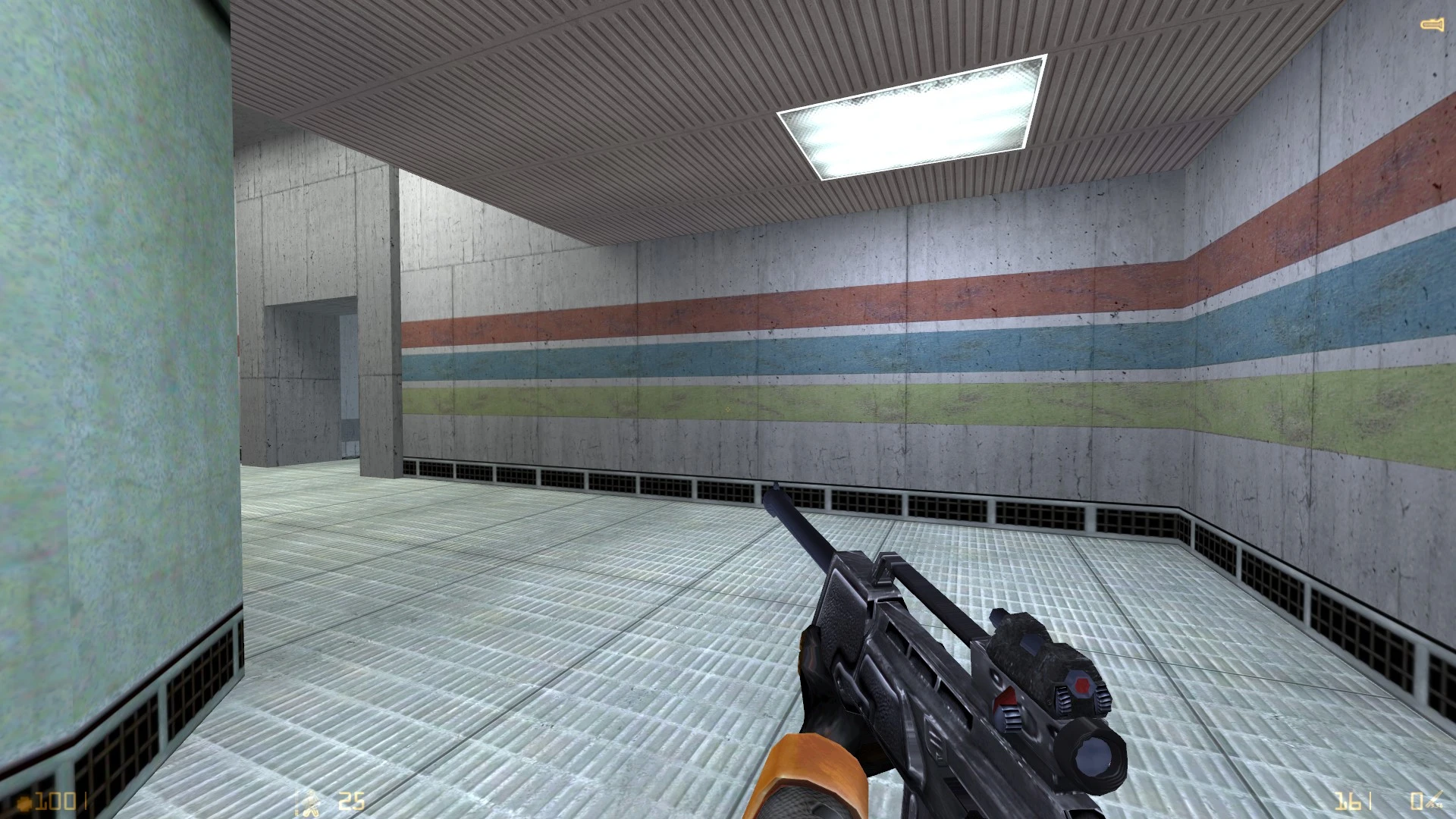
Half-Life: Expanded ArsenalHalf-Life (1998)
Half-Life: Expanded Arsenal to mod do Half-Life, który nie tylko znacznie poprawia jakość tekstur w grze, ale także dodaje mnóstwo nowej broni i NPC, rozszerzając arsenał gracza i różnorodność przeciwników.

Ukrainian Translation for Half-Life: Field IntensityHalf-Life (1998)
Ukrainizacja moda Half-Life: Field Intensity, która w pełni tłumaczy menu, cały tekst w grze oraz częściowo dodaje ukraiński dubbing.
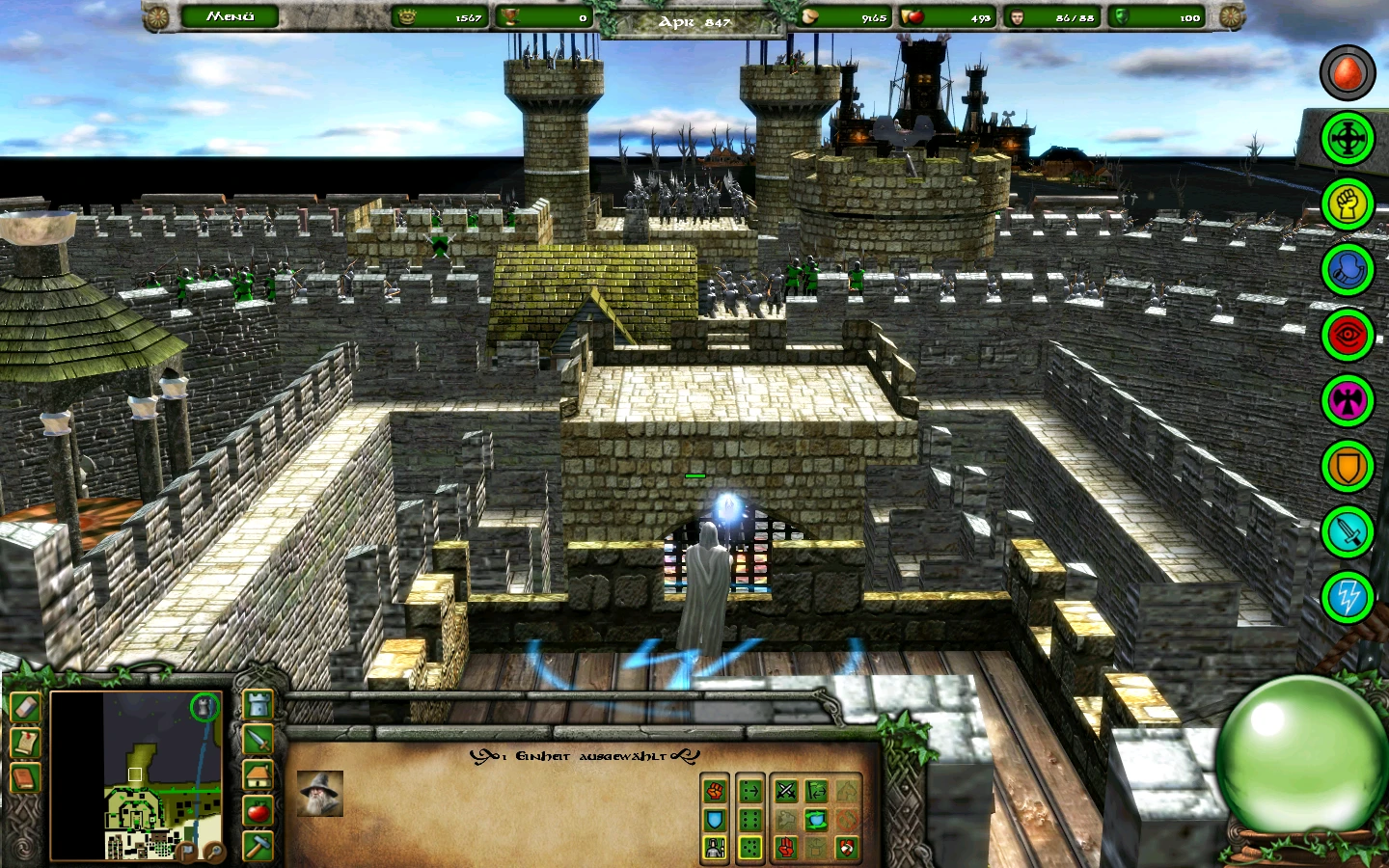
Damnation of MankindStronghold Legends (2006)
Damnation of Mankind to mod, który zastępuje niektóre jednostki tymi związanymi z uniwersum "Władcy Pierścieni".
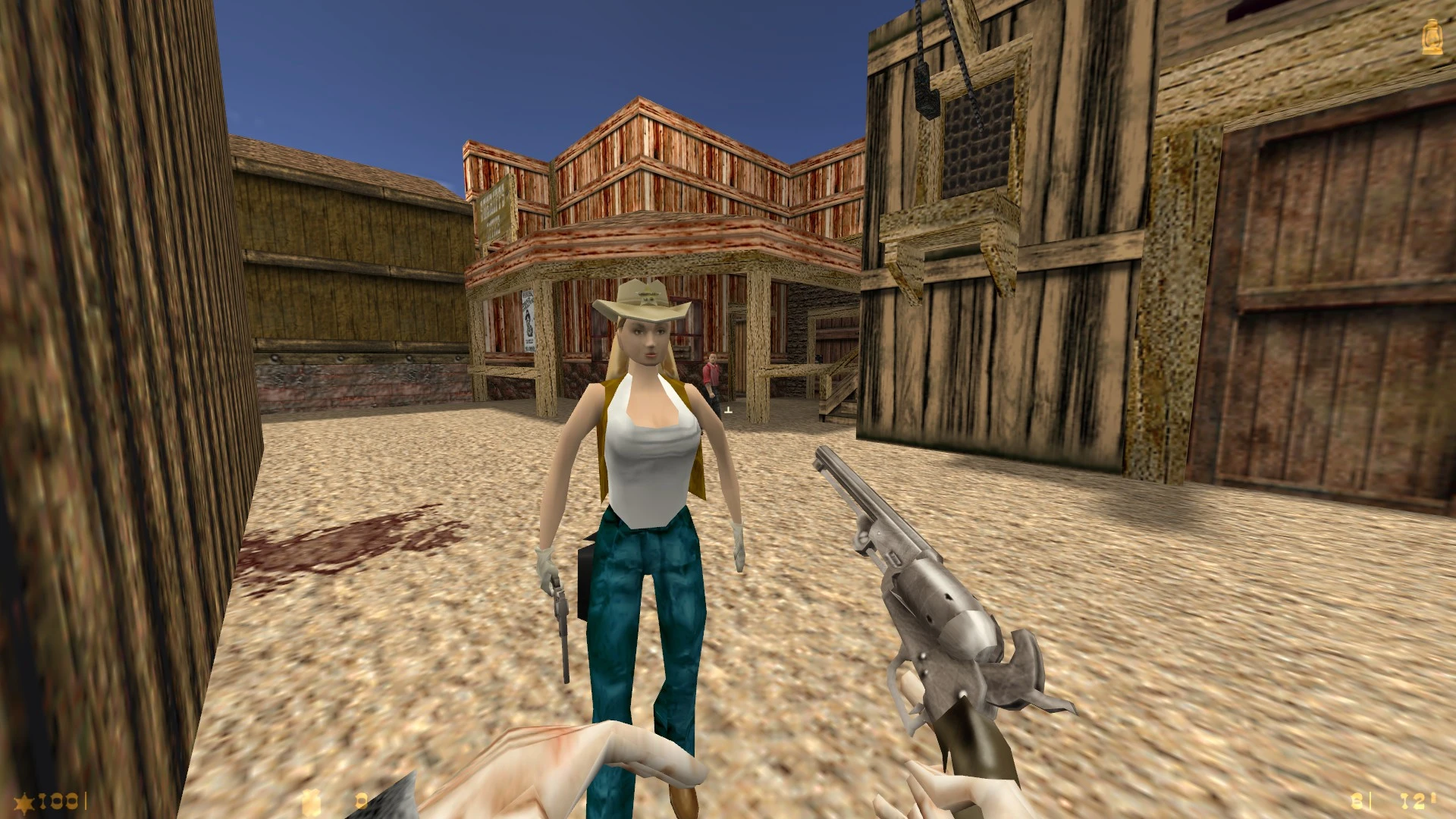
Half-Life: WANTED!Half-Life (1998)
Half-Life: WANTED! to całkowita konwersja Half-Life w atmosferze Dzikiego Zachodu z pojedynkami, kanionami, meksykańskimi bandytami i zakurzonymi miasteczkami, tworzącymi poczucie prawdziwej przygody w kampanii i multiplayer.
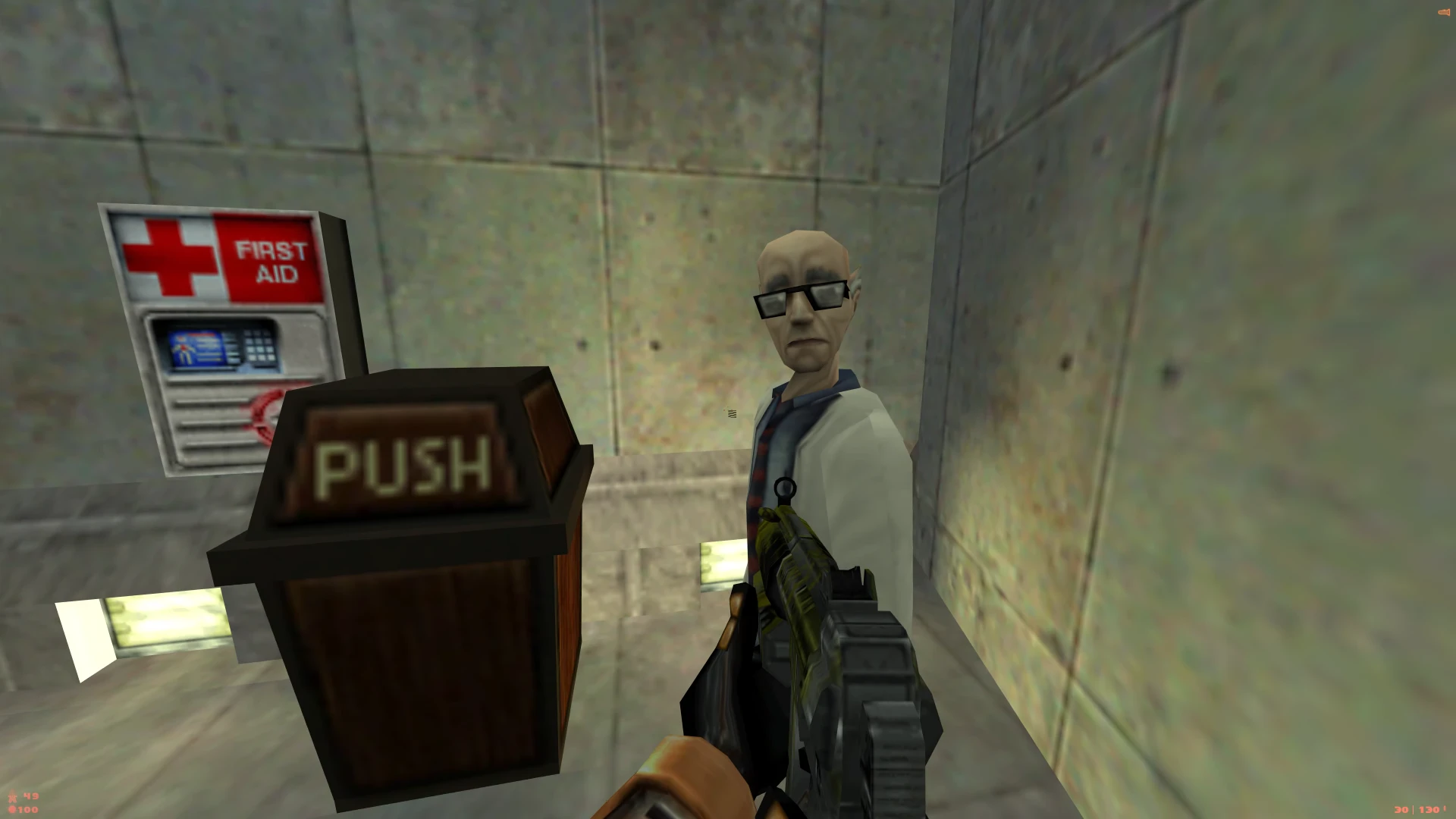
Modified HL1 CampaignHalf-Life (1998)
Wersja poziomów Half-Life z modyfikacjami podobnymi do tych, które występują w niektórych rozdziałach Half-Life: MMod. Stworzona specjalnie dla Brutal Half-Life v3.
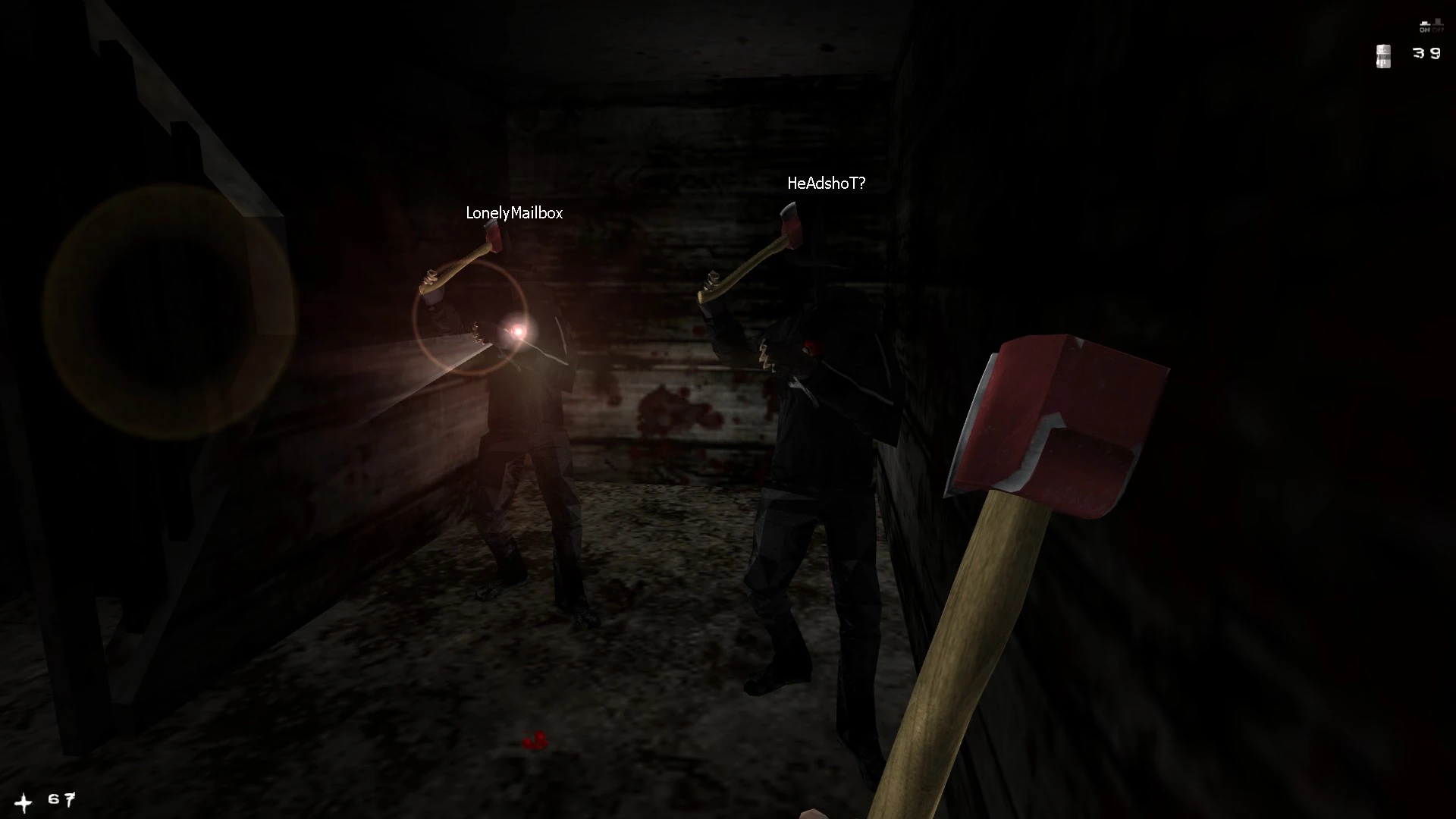
Afraid of Monsters: Dark Assistance BetaHalf-Life (1998)
Afraid of Monsters: Dark Assistance to kooperacyjna wersja kultowego horroru-moda do Half-Life. Grasz jako narkoman David Leatherhoff, który walczy z halucynacjami i potworami we własnym zniekształconym umyśle. Mod oferuje zarówno rozgrywkę kooperacyjną, jak i dla jednego gracza, ulepszoną grafikę, nową broń i przeprojektowane mapy.
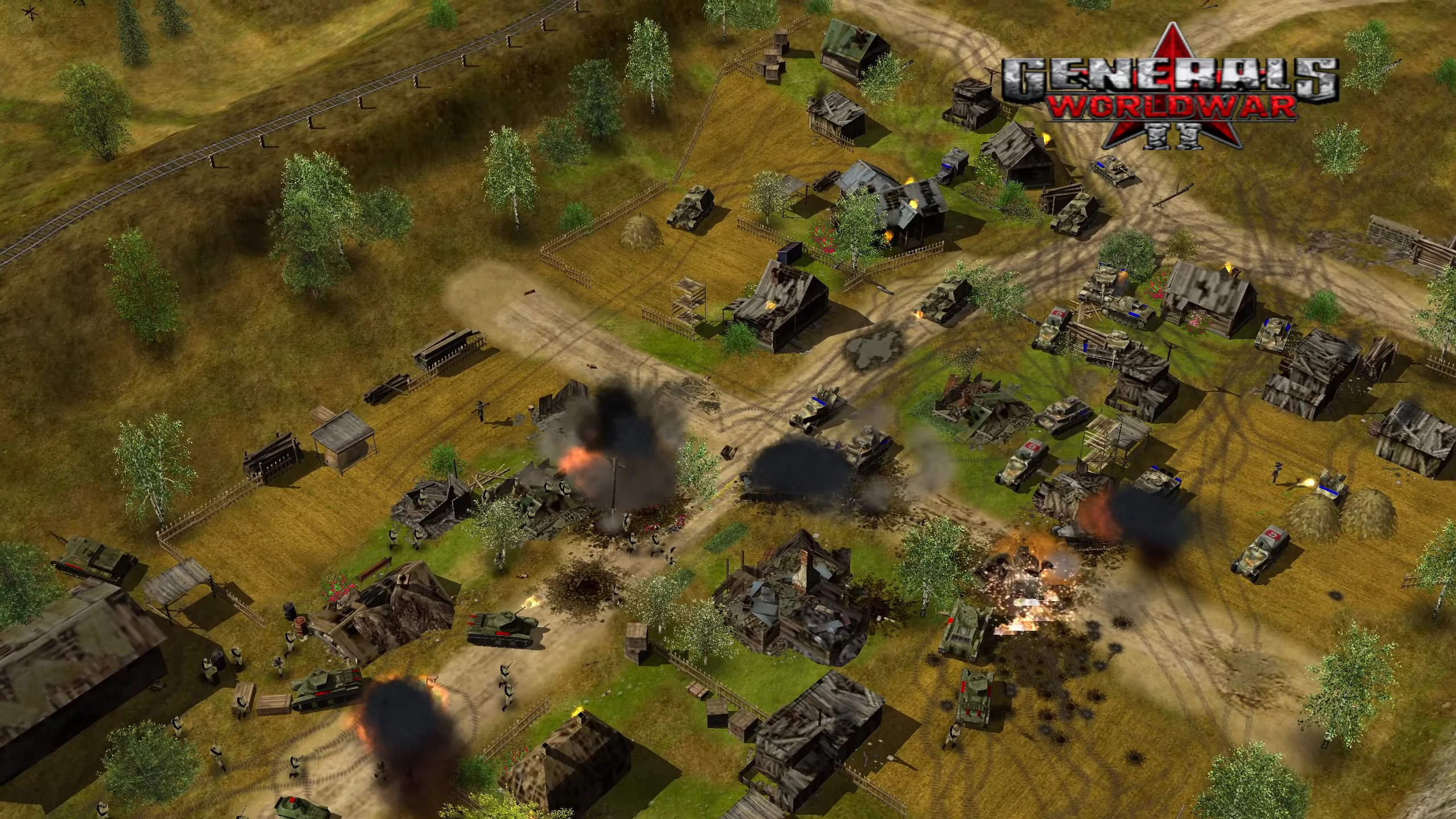
C&C World War IICommand & Conquer: Generals (2003)
C&C World War II to totalna konwersja dla Generals Zero Hour, przenosząca grę do czasów II wojny światowej. W modzie dostępne są 4 frakcje z trzema specjalizacjami każda, unikalny system rozwoju pojazdów według lat, nowe mapy, dubbing i dźwięki, ulepszony AI oraz głęboki nacisk na taktykę i logistykę walki.